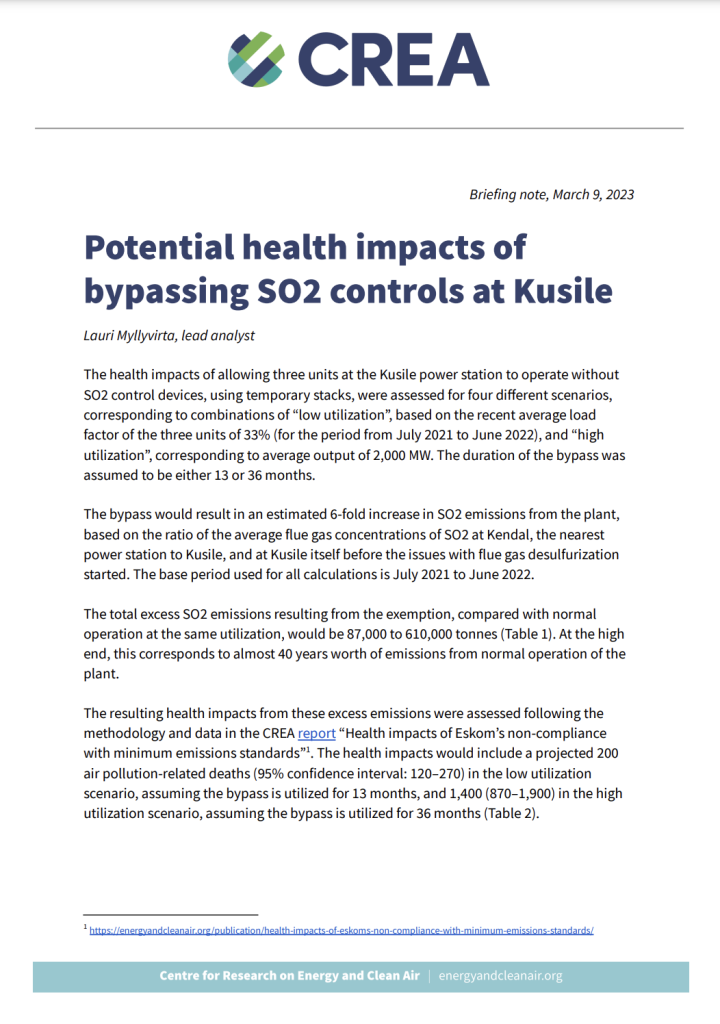The Centre for Research on Energy and Clean Air (CREA) has released a briefing note on the health impacts of allowing three units at the Kusile power station in South Africa to operate without SO2 control devices, using temporary stacks.
The health impacts were assessed for four different scenarios, corresponding to combinations of “low utilization”, based on the recent average load factor of the three units of 33% (for the period from July 2021 to June 2022), and “high utilization”, corresponding to average output of 2,000 MW. The duration of the bypass was assumed to be either 13 or 36 months.
The bypass would result in an estimated 6-fold increase in SO2 emissions from the plant, based on the ratio of the average flue gas concentrations of SO2 at Kendal, the nearest power station to Kusile, and at Kusile itself before the issues with flue gas desulfurization started. The base period used for all calculations is July 2021 to June 2022.
The total excess of SO2 emissions resulting from the exemption, compared with normal operation at the same utilization, would be 87,000 to 610,000 tonnes. At the high end, this corresponds to almost 40 years worth of emissions from normal operation of the plant.
The health impacts would include a projected 200 air pollution-related deaths (95% confidence interval: 120–270) in the low utilization scenario, assuming the bypass is utilized for 13 months, and 1,400 (870–1,900) in the high utilization scenario, assuming the bypass is utilized for 36 months.
The societal costs associated with the health impacts would be a projected R3.6 bln (R2.3–5.0 bln) in the low utilization, 13 months scenario, and R25 bln (R16–35 bln) in the high utilization, 36 months scenario.
